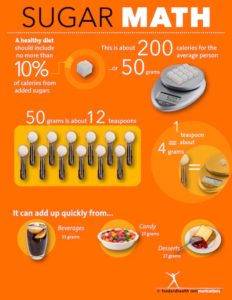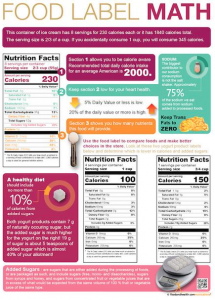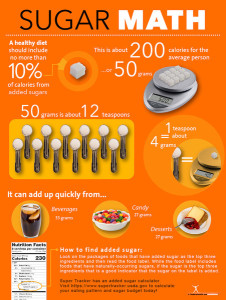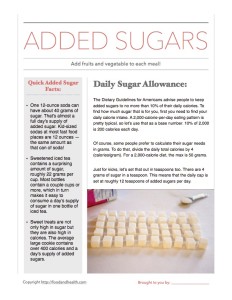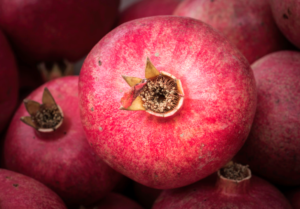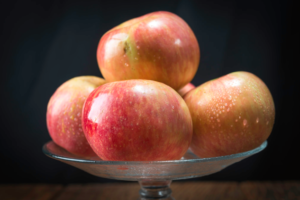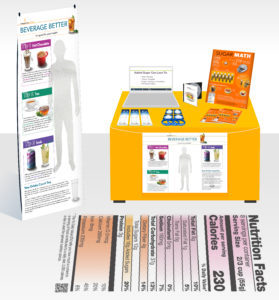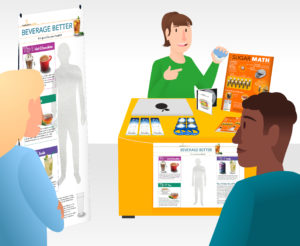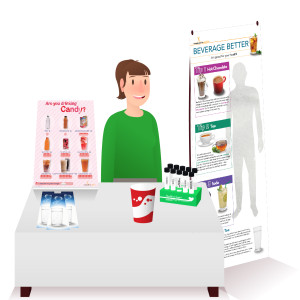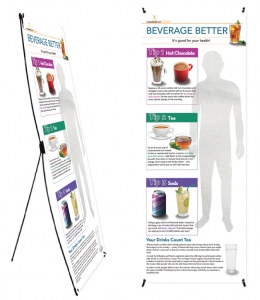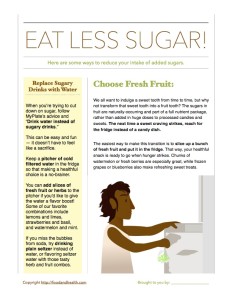Today I want to try something a little different.
I’d like to offer a tour of a few lessons from some of the top posters in the Nutrition Education Store.
You see, 3 different posters have been extremely popular amongst health and nutrition educators recently, and now I want to draw them to your attention. After all, my job is to help you look your very best right now. So let’s take a look at the 3 top posters in the Nutrition Education Store.
Are you ready for this?
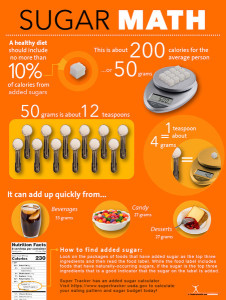 Poster #1 is the new Sugar Math Poster. Its key lesson is to limit added sugars.
Poster #1 is the new Sugar Math Poster. Its key lesson is to limit added sugars.
How does it teach this lesson?
Through math problems!
You see, sometimes communicating important nutrition messages is a matter of breaking them down into manageable sections, making the information both accessible and memorable.
This poster manages that with varied representations of just how much added sugar people should limit themselves to each day.
Remember, the Dietary Guidelines for Americans advise people to “Shift to reduce added sugars consumption to less than 10 percent of calories per day.” That 10% is roughly 200 calories for the average person. That’s equal to 50 grams, which in turn is equal to about 12 teaspoons. The Sugar Math Poster features images of each of these amounts in an approach that’s bound to appeal to a wide range of learning styles.
The poster also highlights key sources of added sugars and spells out how to figure out how much added sugar is in a variety of packaged foods. No wonder it’s one of the most popular posters in the store!
Now let’s move on to the next poster.
 Poster #2 is the Eating Patterns Poster from the 2015 Dietary Guidelines for Americans series. Its key lesson is to shift into a healthier eating pattern.
Poster #2 is the Eating Patterns Poster from the 2015 Dietary Guidelines for Americans series. Its key lesson is to shift into a healthier eating pattern.
As you can see, this poster focuses on what is and is not included in a healthy eating pattern. With beautiful photos placed in a uniquely eye-catching arrangement, this post rocketed to the top of our list practically as soon as it was released.
So why represent healthy foods visually?
The photos demonstrate that healthy eating doesn’t have to be plain and boring. By making the foods that people need to consume look their very best, the photos in this poster add appeal to the eating pattern they’re illustrating. Plus, they provide a pop of color that would be welcome in any office, cafeteria, or display.
How would you use this poster in your life?
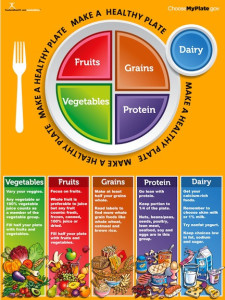 Finally, poster #3 is a classic — our very first MyPlate Poster. It teaches a fun way to balance your plate at each meal.
Finally, poster #3 is a classic — our very first MyPlate Poster. It teaches a fun way to balance your plate at each meal.
Ever since the USDA released MyPlate in 2011, it has been a popular tool to help educators teach their audiences about proper portions and proportions. As you know, My Plate offers a way to visualize a healthy and balanced plate at each meal, with half the plate filled with fruits and vegetables, grains taking up another quarter, and the remaining quarter of the plate filled with protein foods. A side of dairy rounds out the plate and completes the look.
Each food group has its own lessons and tips, and they all come together to create a healthy eating experience. This poster highlights the most important aspects of MyPlate, illustrating each food group and drawing attention to the key lessons associated with each section of the plate. Its as memorable as it is engaging, and the My Plate poster has been getting rave reviews since we first brought it to the store.
As an added bonus, I’d like to offer you an exclusive look at the handout that accompanies this MyPlate poster. Normally you could only get it if you bought the poster, but I want to make an exception today, so get your free copy of this handout now!
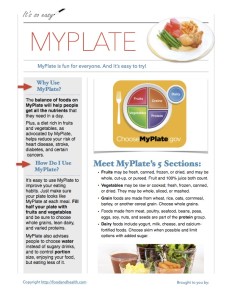
And finally, here are some more of the materials that are at the top of the Nutrition Education Store right now!
12 Lessons of Diabetes Kit

My Plate Handout Tearpad

Cooking Demonstration Kit: Set of 10 Cooking Demo Tools



